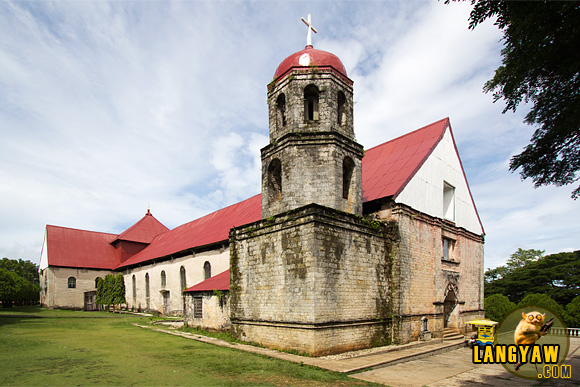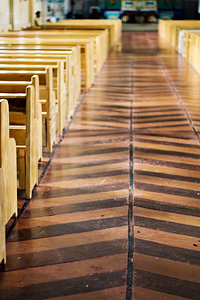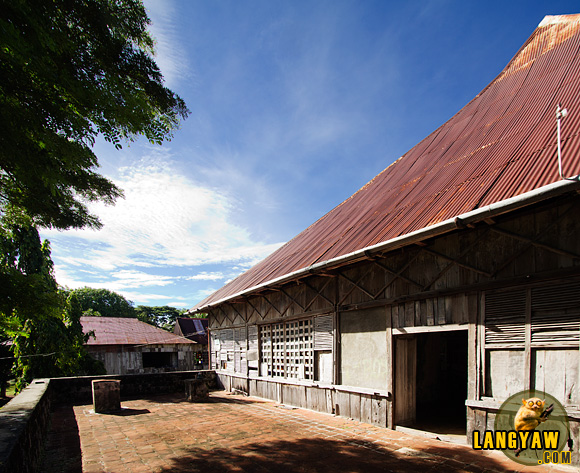

 I was speechless and shaking my head in awe of finally coming face to face with the structure that stood before me: massive, immense, and delightfully beautiful.
I was speechless and shaking my head in awe of finally coming face to face with the structure that stood before me: massive, immense, and delightfully beautiful.
Built during the sunset years of the Spanish colonial period by the Augustinian Recollect friars, its lower level is draped with a series of arches made of coral stones; the second level of wood with large windows and a huge roof with still original galvanized iron sheeting, sloping gracefully.
It is more than a hundred years old and patterned after the humble nipa hut (traditional Philippine house) that is well adapted to the tropical clime. One can consider it as an oversized bahay-na-bato.


Tucked in one of the smallest provinces in the Philippines, Siquijor, with just a little over 70 kilometers of circumferential road, an hour by fastcraft off the shores of Dumaguete City. In the municipality of Lazi, under the shade of century old acacia trees lining the road are two heritage structures that make this place special.
It was my first time to visit Siquijor, my 80th and last province to visit in the country and I only had one objective, to shoot and write about the architecture of Lazi’s beautiful kumbento (parochial house) for a publication. But I was never prepared to actually see for myself the structure and its equally impressive but simple church.

The church dedicated to San Isidro Labrador is austere, with simple embellishments at its facade and with a wooden pediment. It was built in 1884. But entering the structure can give one goosebumps: the retablos are still original, there are twin pulpits at both sides and, what’s stunning is the herringbone wooden flooring!


At the kumbento, which was built from 1887-1891, is u-shaped and is believed to have served as a retreat house or summer place for Recollects serving in Negros and Mindanao. This explains its immense size and is thought to have from 20-30 rooms. A close scrutiny of the flooring and wooden posts has notches where these partitions might have been attached.

The grand staircase leads to the beautiful second floor. Wooden ceiling at the main hall while sawali covered with limewash in the rest of the ceilings. Thin partitions of tabique pampango are still present while windows have still original clear and colored glass panes. At the back is a huge cistern, the aljibe, that collected rain water.

But I was more impressed with the roof and I just have to check it out. With a wooden ladder and one of the sacristans, Alistair, as my guide, we entered into a cavernous space with wooden trusses thereabouts. Its around 8-10 meters high at the topmost reaches.
While it can be hot inside as the roofing is made from galvanized iron sheets, the structure is well designed for the hot climate with its edges having good ventilation. Note that the iron sheets are still original and a close inspection of one of the sheets bear the Redcliffe trademark.

I was shooting the kumbento for the next two days, sleeping at one of the quarters, and it afforded me to know more of the structure and its interesting details. Together with the church, these two structures are real treasures that are worth preserving and every Filipino should visit and treasure.

This is my entry to the September 2012 PTB Bloggers’s Blog Carnival hosted by Ding Fuellos of The Pinoy Explorer.
Pagka-nindot sa colored glass window bai.
mao jud bai. and these are still original
Ang impressive ng upkeep! And if there’s one thing that I liked about the interiors — it would have to be the colorful glass window panes! By the way.. awesome Visayas Roundup! The Blog Carnival is such a grand idea put to life.
The Blog Carnival is such a grand idea put to life. 
really great place there @Mai_Flores:disqus